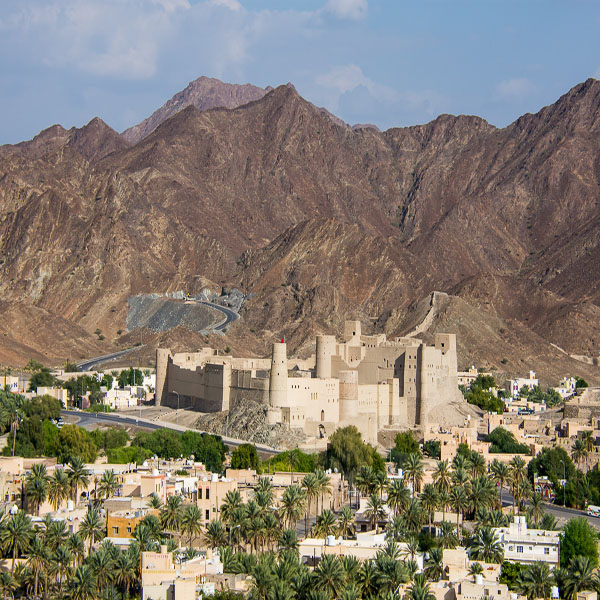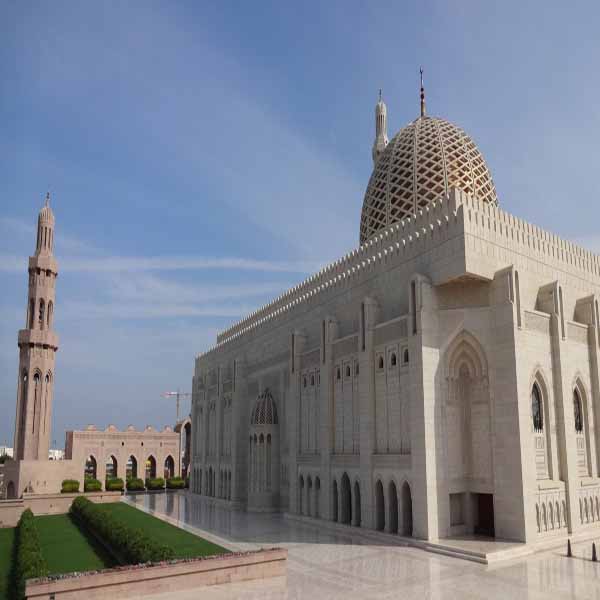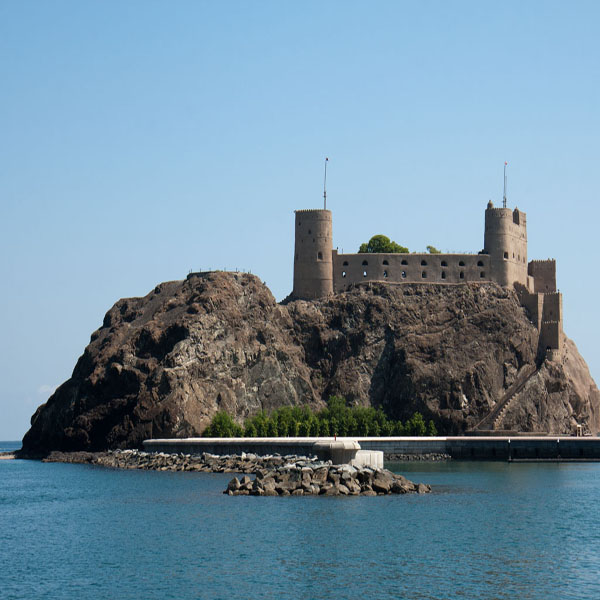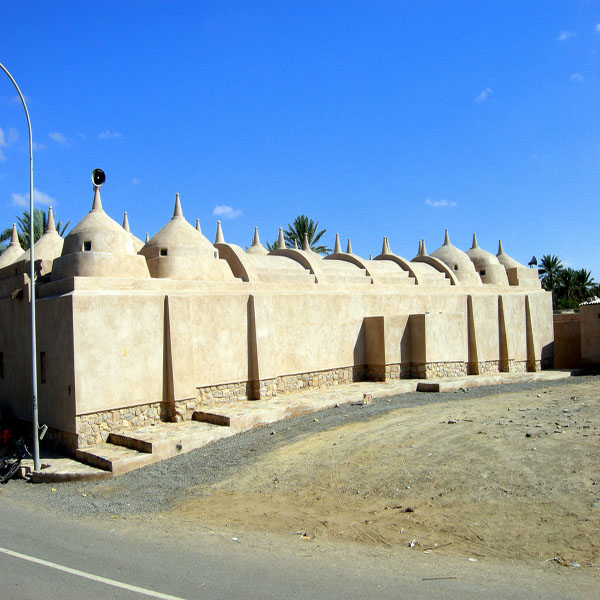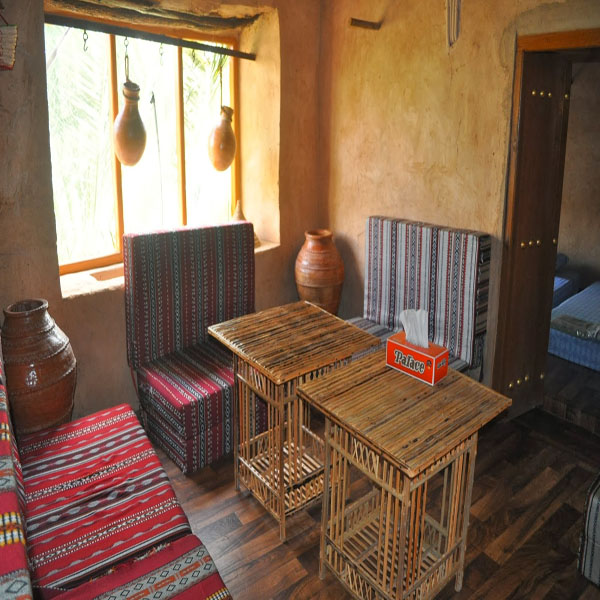Shoestring Holiday In oman
Shoestring Holiday In oman
-
Day 1: Muscat Governorate
Arrival at Muscat International Airport
Meet and Assist upon arrival with our English Speaking airport representative, guest will be transfer to the hotel. Check in the hotel.* Overnight at Muscat Hotel
-
Day 2: Muscat City Tour (B)
Breakfast at the hotel
Guest will pick up from the hotel and start their Muscat City Tour by visiting Sultan Qaboos Grand Mosque (Masjid), one of the most beautiful architectural piece of work. The mosque was built over a period of 6 years from 1995 to 2001. The main chandelier is made of pure Swarovski crystal and the carpet adorning the large prayer hall was woven by experts, made out of pure Persian silk. The mosque (Masjid) exterior is constructed with quality Rajasthani sandstone andthe main halls as well as the small prayer rooms are adorned with the finest Italian Marble. The Mosque (Masjid) is surrounded by 5 minarets, each of which symbolizes the holy five vows taken by every devout Muslim to reinforce his faith in the Almighty.
We will proceed to Old Muscat, to visit Muttrah Souq, one of the most popular souqs in the Middle East.Take a walk in its labyrinthine alleyways beckoning with a myriad of merchandise, from imported fabrics to exotic Oriental spices, perfumes and richly handcrafted Artifacts. A visit to this frenetic, pulsating hub of Muscat’s old quarter makes for a delightful experience.
Next, guest will be taken for a visit to the magnificent Al Alam Palace, the official residence of His Majesty Sultan Qaboos Bin Said the ruler of Oman. The palace is an architectural marvel for both its design and its location between the twin Portuguese forts Mirani and Jalali (A brief photograph stop from outside only).Any one of the Muscat Museum, after the tour, back to hotel.
* Overnight at Muscat Hotel
-
Day 3: Mountain Crossing (B, D)
Breakfast at the hotel and check out.
Guest will pick up from the hotel and we continue our drive through Wadi Bani Auf. It is an ancient wadi offering breathtaking vistas along its 26-kilometre trail. A little gap in the mountains, barely discernible from the main road, reveals the entrance to the wadi, which cuts a swathe deep into the mountainous terrain. Atop its craggy summit, a crumbling watchtower, picturesque in ruin, marks the entrance to the wadi. A short distance ahead, a splash of vivid green brings you to a delightful oasis village called Al Far'a. Nourished by an underground falaj, date palms and an assortment of other trees, grow rich and thick. It makes an enchanting sight amid the barrenness of the wadi. Vegetation is verdant for several kilometers along one side of the wadi, following the course of a perennially flowing falaj. Tucked away in the cool confines of this growth are the houses of local residents, shielded from the glare of the sun. On higher elevations along the wadi here, are the remains of stone houses, cobbled together with stones found on the wadi bed.
We continue our drive to visit Al Hamra. It is a 400-year-old town in the region Ad Dakhiliyah, in northeastern Oman. It is home to the mountainside village of Misfat Al Abryeen. Ghul lies to the west of the town. Al Hamra is also known as Hamra Al Abryeen with reference to the Al Abri tribe who live there. Some of the oldest preserved houses in Oman can be found in Al Hamra, a town built on a tilted rock slab. Many of the houses have two stories, with ceilings made of palm beams and fronds topped by mud and straw.
Next stop will be in Jabal Shams. Jabal Shams is Oman’s highest peak, at 3,009 metres above sea level, Jabal Shams or Sun Mountain is located in the Wilayat of Al-Hamra .The summit is unreachable by public road which ends at 2,000m. At night the guests can camp at the Jabal Shams Resort and experience the wonders of a moonlit night, far away from the city lights.
Our last stop will be in Misfat Al Abriyyin, it is a quaint village atop of the mountain, the houses in Misfat look like they have been hewn out of rock. An ideal picnic spot would be near the many water pools or the falaj flowing by. With date plantations and a lot of greenery, surrounded by the slopes of the mountain, Misfat is another popular spot for those en route to the Jabal Al shams and visitors are sure to enjoy the stone dwellings still in existence in these pretty mountain villages. Dinner at the Old House
* Overnight at Misfat Al Abriyyin Old House (Sharing Toilet)
-
Day 4: Green Mountain (B, D)
Breakfast at the hotel and check out.
Guest will pick up from the hotel and we continue our drive to visit Jabal Akhdar, meaning “The Green Mountain” in Arabic, is part of the Al Hajar mountain range, one of Oman’s most spectacular regions. Perched here 2,000 metres above sea level, Alila Jabal Akhdar overlooks a dramatic gorge, surrounded by awe-inspiring views of the Al HajarMountains.The perfect base for exploring the region’s magnificent landscape of rugged, untouched beauty while staying in the height of sumptuous comfort. A heaven for adventure travelers, nature lovers and those seeking a retreat from the desert heat.
We continue our drive to visit Nizwa, tourist site par excellence and the first capital of the Sultanate of Oman in the sixth and seventh centuries.Nizwa has managed to retain its charm through the centuries with its strong and its guard tower that protects the city against invaders. This is the land of Imam Ibn Al Julanda first democratically appointed imam in the seventh century. Visit the fort surrounded by palm trees. This fort built in the seventeenth century by Imam Sultan Bin Saif Al Ya'ruba. Nizwa Souq is the city, famous for its handicrafts and agricultural products, has an expansive souq with an array of products. The souq bustles with vendors selling everything from meat, fish, fruits and Nizwa is renowned for its silver jewelry which is considered to be the best in the country. Its people are masters in Khanjar making (curved dagger), recognized for its distinctive style and patterns. They also make copper ware, coffee pots, swords, leather goods and pottery.
We will proceed to Bahla. It is a town in Ad Dakhiliyah, Oman. It is famous for its ancient fort and its pottery. The town is 40 km away from Nizwa and about 200 km from Muscat the capital. The old Bahla Fort with its 12 km (seven miles) wall is the oldest fort in Oman. The fort is believed to have been built in pre-Islamic times and is now undergoing reconstruction sponsored by UNESCO and the site is included on UNESCO's list of World Heritage Site. All area rounded by the old wall is called Bahla Oasis and it is listed as an old area. Bahla pottery is famous throughout Oman, and is in great demand from tourists. A short distance beyond Bahla lays the Castle of Jabreen. This massive three-storied was built during Al Ya'ruba dynasty in the mid-17th century. It is a fine example of Islamic architecture with beautiful wooden inscriptions and paintings on the ceilings. (Photo Stop Only)
Next Stop will be in Jabrin. It is a small town in Ad Dakhiliyah Governorate in northeastern Oman. The town is known for its impressive castle, which was built by the Yaruba dynasty Imam Bil'arab Bin Sultan, who ruled from 1679 to 1692.
Our last stop will be in Wahiba Sand. (Dune bashing, enjoying the sun set view and will visit Bedouin family will have dates & traditional coffee with them). The Wahiba Sands or Ramlat al-Wahiba (also called Sharqiya Sands) is a region of desert in Oman. The region is named for the Wahiba tribe. The area is defined by a boundary of 180 kilometers (110 mi) north to south and 80 kilometers (50 mi) east to west, with an area of 12,500 square kilometers (4,800 sq mi). The desert has been of scientific interest since a 1986 expedition by the royal geographical society documented the diversity of the terrain, the flora and fauna, noting 16,000 invertebrates as well as 200 species of other wildlife, including avifauna. They also documented 150 species of native flora. Dinner at the camp
* Overnight at Wahiba Sand Camp
-
Day 5: Turtle Watching (B, D)
Breakfast at the hotel and check out.
Guest will pick up from the hotel and we continue our drive to visit Wadi Bani Khalid, for an easy walk along the riverbed with ample time to cool down in the crystal clear waters of the rock pools. It is the best-known wadi of the Sharqiyah region. Its stream mountains a constant flow of water throughout the year. Large pools of water and boulders are scattered along the course of the wadi. As a geographical area, WadiBani Khalid covers a large swathe of low land and mountains. Caves form some of the interesting features of this wadi. These include KahfMaqal which is one of the Sultanate's underground chambers. Springs of water are also common in this wadi.
We will proceed to visit Jaalan Bani Bu Ali, it is one of the largest states of the province of South – East area and is located in the South-Eastern of the Sultanate of Oman. Photo Stop at Al Hamoda Mosque. Build in a beautifully simplistic style, the mosque’s 52 domes have hidden provision for ventilation. The domes, along with palm trees in the courtyard, contrast vividly with the blue of the sky. Falaj Al Dhahir bubbles through the courtyard where it is used for pre-prayer ablution and makes the areas cool and restful.
Our last stop will be at Ras Al Hadd, It ishome of the Giant Green turtle, surrounded by Arabian Gulf. Check in the Resort, Dinner will be in at resort
After dinner, guest will pick - up from the hotel for Turtle watching at Ras Al Jinz to have a glimpse of Giant Green Turtles. (Note camera’s is not allowed)
* Overnight at Ras Al Hadd Hotel
-
Day 6: Coastal Road (B)
Breakfast at the hotel and check out.
Guest will pick up from the hotel and Today, client will star drive to coastal road to visit Sur; it is an ideal location in the northeast province of Sharquia and is a seafaring town, a fishing village and a trading port all in one. The highlight of the town is the dhow builder’s yard on the coast just beyond the town. Sur started trading activities with the African coast as early as the 16th century A.D. a drive through its labyrinthine streets reveals many fine old houses with caved doors, arabesque windows and other intricate details.
We continue our drive to visit Wadi Tiwi.It is spread over an area of 36 kilometers (22.37 miles) at the foot of the mountain village of Mibam. It is a fertile wadi that meanders through a number of agricultural villages which grow dates and bananas overlooking the majestic mountains. You can also see the valley below, and the azure waters of the sea from some elevated locations.
Next stop will be in Wadi Shab;Wadi Shab literally means ‘Ravine between the cliffs’. The green pools and abundant shade give Wadi shab an almost ethereal aura. (Photo Stop Only)
Our last stop will be in Bimmah Sink Hole, it is a spectacular limestone crater created many years ago by a collapsing mountain and filled with blue-green sea water – a real wonder of nature that is definitely worth a look. After the tour back to Muscat
* Overnight at Muscat Hotel
-
Day 7: Leisure (B)
Breakfast at the hotel.
Day at leisure
* Overnight at Muscat Hotel
-
Day 8: Departure (B)
Breakfast at the hotel.
Departure transfer to Muscat International Airport








